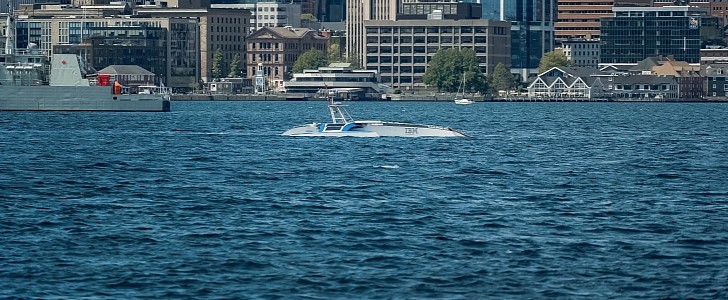Since its launch in September 2020, ProMare and IBM’s Mayflower Autonomous Ship (MAS) has had a long, bumpy journey. But it finally ended a few days ago, when the trimaran completed its historic transatlantic voyage from the U.K. to North America with no crew on board.
Marine research non-profit organization ProMare is responsible for designing and building Mayflower, being assisted by IBM as its science partner, with the latter providing the AI (artificial intelligence) technologies necessary to guide the trimaran and make real-time decisions while at sea.
The vessel has six AI-powered cameras, over 30 sensors, and 15 Edge devices, all of them meant to help the ship’s AI Captain make crucial split-second decisions without any human intervention. Mayflower was created to collect data about the ocean more cost-effectively and can spend a long time at sea, carrying scientific equipment and relying on the non-human captain to navigate safely.
In addition to being a state-of-the-art watercraft, Mayflower is also environmentally-friendly. It uses electric propulsion motors that are powered by solar panels and lithium batteries, just as its onboard computer system.
The autonomous ship managed to conquer 3,500 unmanned miles (5,632 km) at sea in its 40-day long voyage that started in Plymouth, U.K., and ended on June 5 in Halifax, Nova Scotia. But crossing the Atlantic was harder than estimated for the Mayflower, which went through several adventures before finally reaching its destination. The vessel had to deal with two generator issues along the way, changing its course and suffering delays, but it eventually pulled through.
And these weren’t Mayflower’s first setbacks either, with the 50 ft (15 m) autonomous trimaran encountering technical problems last June as well. It was when it first attempted to cross the Atlantic with zero humans on board. It departed on June 15 from Plymouth, U.K., and three days later, it had to return due to what was described as a small mechanical issue that required further investigation.
The vessel has six AI-powered cameras, over 30 sensors, and 15 Edge devices, all of them meant to help the ship’s AI Captain make crucial split-second decisions without any human intervention. Mayflower was created to collect data about the ocean more cost-effectively and can spend a long time at sea, carrying scientific equipment and relying on the non-human captain to navigate safely.
In addition to being a state-of-the-art watercraft, Mayflower is also environmentally-friendly. It uses electric propulsion motors that are powered by solar panels and lithium batteries, just as its onboard computer system.
The autonomous ship managed to conquer 3,500 unmanned miles (5,632 km) at sea in its 40-day long voyage that started in Plymouth, U.K., and ended on June 5 in Halifax, Nova Scotia. But crossing the Atlantic was harder than estimated for the Mayflower, which went through several adventures before finally reaching its destination. The vessel had to deal with two generator issues along the way, changing its course and suffering delays, but it eventually pulled through.
And these weren’t Mayflower’s first setbacks either, with the 50 ft (15 m) autonomous trimaran encountering technical problems last June as well. It was when it first attempted to cross the Atlantic with zero humans on board. It departed on June 15 from Plymouth, U.K., and three days later, it had to return due to what was described as a small mechanical issue that required further investigation.









